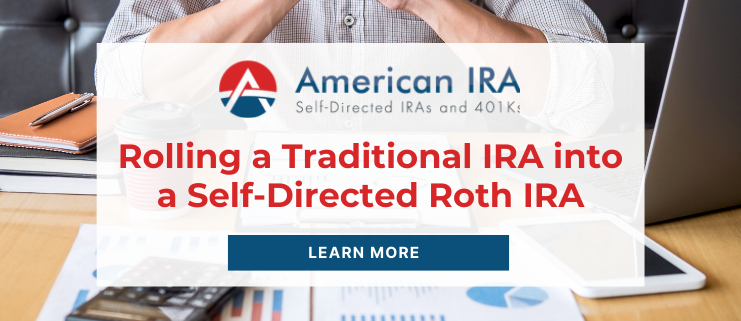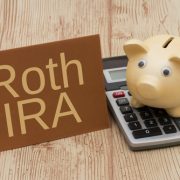Rolling a Traditional IRA into a Self-Directed Roth IRA
Want more investment opportunities? They don’t happen when you sit on the couch and wait for them. You have to get proactive with your retirement investments. And for many investors, getting proactive means one thing: opening a Self-Directed IRA, like a Self-Directed Roth IRA. A Self-Directed Roth IRA puts the power of choice in your hands. With self-direction, you can choose from the full range of available retirement investments—gold and precious metals, real estate investments, and even private companies.
But what if you have an existing Traditional IRA and want to roll over those funds to a Self-Directed Roth IRA? What are your next steps? Here’s what you’ll need to know.
Know the Basic Facts of the Traditional IRA and Roth IRA
First, a quick lesson. A Traditional IRA is a retirement account with tax-deductible contributions being most typical. Within this account, you can let investments grow tax-deferred. Upon hitting retirement, you can then take distributions from this account, which are then taxed as ordinary income. In a Roth IRA, you’ll contribute after-tax dollars. This means they’re not tax-deductible. But since the investments grow tax-free, qualified withdrawals in retirement will also be tax-free. That’s why lots of people like to roll over from a Traditional to a Roth.
But there are a few other reasons you might do this. Maybe you want the tax-free growth and withdrawals of a Roth IRA, for example. Or maybe you want more investment flexibility thanks to using a Self-Directed Roth IRA. Whatever your reason, you need money to make it happen. That’s why it helps to know how to move funds from one type of account to another.
Rolling a Traditional IRA into a Self-Directed Roth IRA: The Basics
First, you’ll want to identify a Self-Directed IRA custodian. This custodian will not only serve as the administrator of your new Self-Directed Roth IRA, but can help you execute the rollover with precision and as much ease as possible. So if you don’t have a Self-Directed IRA custodian in mind, now’s the time to look. And hey—looks like you’re already at the American IRA website! How fortuitous.
But before we get into what we offer, let’s talk more about what the process of rolling over the account will look like. You’ll typically initiate the conversion with a few steps:
- Open the new Self-Directed Roth IRA. Once again, this is where a Self-Directed IRA administrator like American IRA can help.
- Request a conversion form. Working with American IRA, we’ll help provide a conversion form so you can input all relevant information.
- Understand the tax consequences. You’ll likely owe income tax on the entire amount you convert from a Traditional IRA into a Roth IRA in the same calendar year you make the switch. For more information on this, however, we recommend consulting a tax professional about your unique situation.
Why is this tricky? Rolling over the funds means you’re moving from an account that used pre-tax funds into an account that will use post-tax funds. This creates a taxable event in all likelihood. So understand those consequences and prepare for them. Then, with all the forms necessary and the new Self-Directed Roth IRA, you can execute the rollover.
There are other options for funding a Self-Directed Roth IRA. Transfers, for example, can be straightforward if you meet the requirements. But you’ll need specific help for your unique situation. Interested in learning more about Self-Directed IRAs? Contact American IRA, LLC at 866-7500-IRA (472) for a free consultation. Download our free guides or visit us online at www.AmericanIRA.com.








